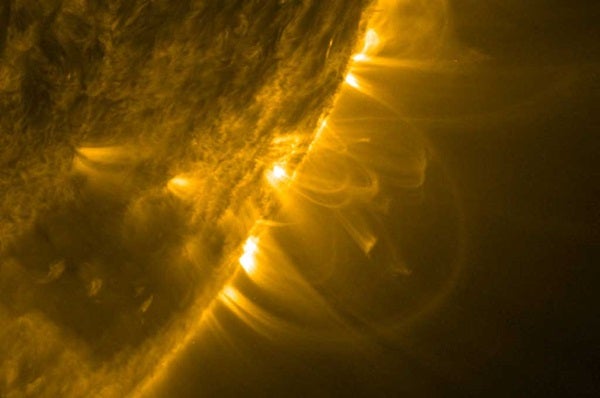To understand how the corona is heated, some astronomers study coronal loops. These structures are shaped like an upside-down U and show where magnetic field lines are funneling solar gases or plasma.
Scientists’ best photos of the Sun suggest that these loops are a constant width, like strands of rope. However, new work shows that this is an optical illusion; the loops are actually tapered, wider at the top and narrower at the ends. This finding has important implications for coronal heating.
“You need less energy to heat the corona if the loops have a tapered geometry, which is exactly what we found,” said Henry Winter of the Harvard-Smithsonian Center for Astrophysics (CfA) in Cambridge, Maryland.
Winter and his colleagues constructed a computer model of a tapered loop using basic physics. Then they processed their model to show how it would look when photographed by instruments like the High-resolution Coronal Imager (Hi-C) or the Solar Dynamics Observatory’s Atmospheric Imaging Assembly (AIA).
They found that even the best available images wouldn’t have the resolution to show the loop’s true structure. As a result, a tapered loop would appear tubular even though it wasn’t.
“In science, we always compare theory to reality. But if your view of reality is incorrect, your theory will be wrong, too. What we thought we saw could be just an effect of the instrument,” said Winter.
Historically, as scientists have gotten better and better photos of coronal loops, they have revealed more and more structure. What first appeared to be a single loop turned out to be made of many smaller strands. The team’s work shows that better instruments with higher resolution are still needed to reveal the true shape and structure of the loops.
“Coronal loops are like Russian nesting dolls. We keep pulling them apart, but we haven’t gotten to the smallest one yet,” said Winter.










